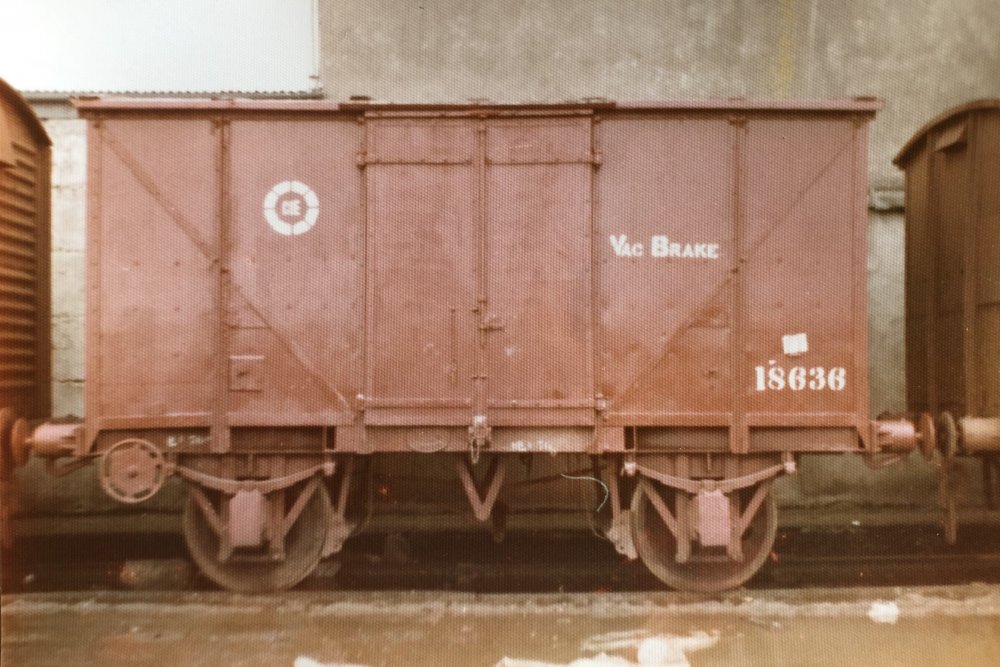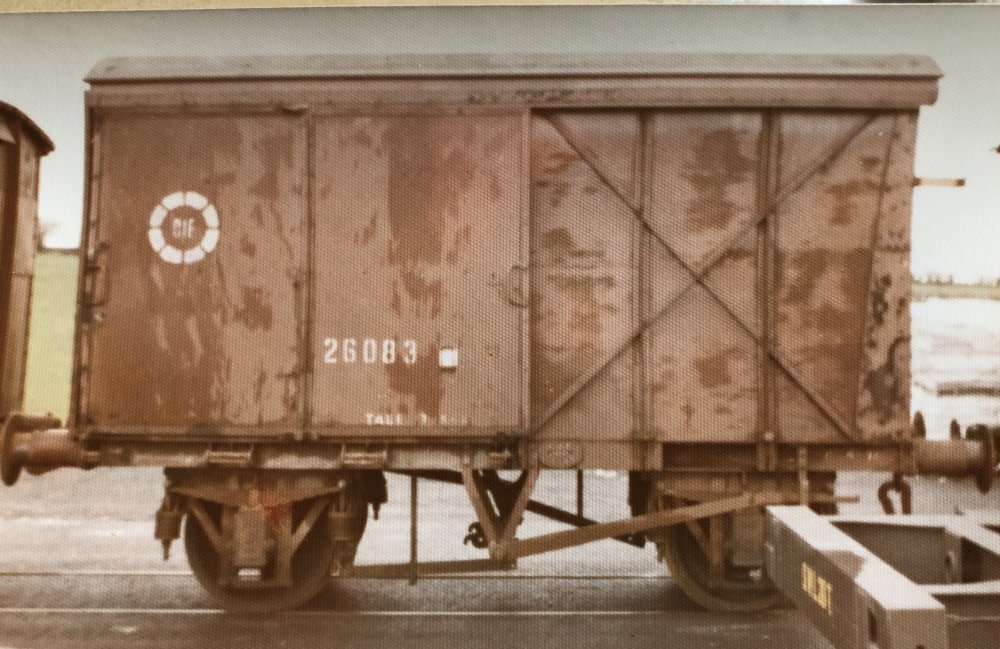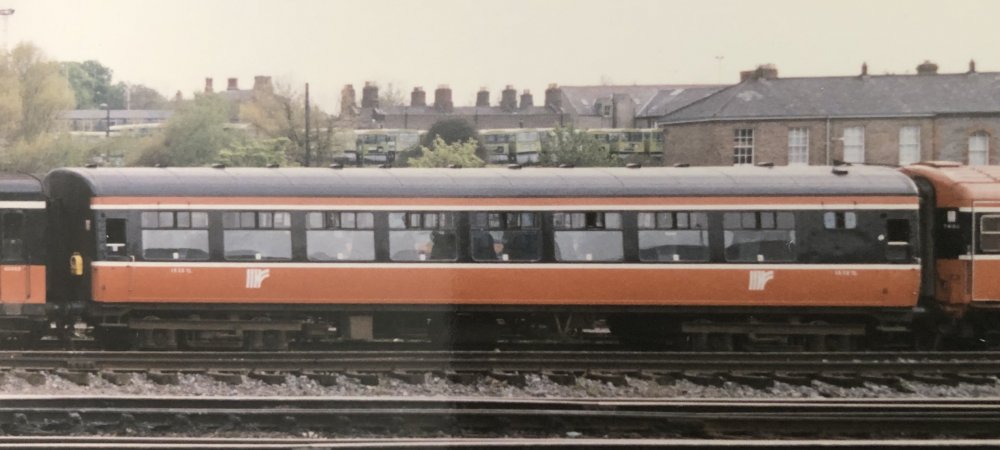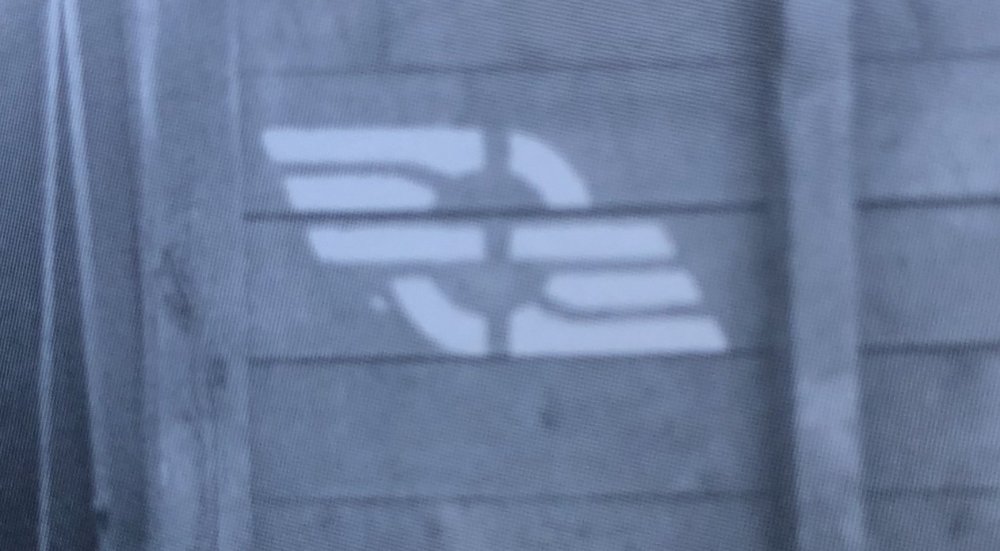-
Posts
15,924 -
Joined
-
Last visited
-
Days Won
394
Content Type
Profiles
Forums
Events
Gallery
Blogs
Community Map
Everything posted by jhb171achill
-
The tank-side lettering started disappearing during the 1930s, possibly the late 30s. By the late 1940s it was gone, and just plain black after that. The nameplates varied. Some were red with polished brass raised rim and numerals, but some were painted black all over with rim and letters picked out in red. It varied from loco to loco, so with any specific model you'd need to check. With "Lurganboy" (an excellent choice!) photos are unclear. If you need the info I will do a bit of delving for you.
-
Walker Diesel Class F - ECMbuild in 4mm for OOn3
jhb171achill replied to murrayec's topic in Irish Models
Point of order, m’lud; the “A” class were delivered silver (as were the original trio of G’s, the original E401s, the B101s and the Cs.). The F were always green, and were probably never repainted once - they were only in use six years.- 136 replies
-
- 2
-

-
- class f
- west clare
-
(and 1 more)
Tagged with:
-
Yes, that would be right for the time. The pics I saw of them in Sligo were twenty years later. As mentioned before the Woolwiches can’t really be considered as really “Midland” engines - they all entered traffic new as GSR locos and while Galway was a regular run for them, so were Cork - Waterford, Waterford - Limerick and other routes way more south than the Galway line.
-
Congratulations, IRM team. Very well done indeed!
-
Given the size, they're very like the stuck-on ones which appeared on the "A" class locos when introduced and were only taken off once they were repainted black in the early 1960s. Very nicely made.
-
-
WOWWWWWW I've started drooling again. Superb stuff as always - I absolutely love that layout and era.
-
Yes, the "F" class were indeed on the West Clare; narrow gauge. No use to the RPSI but had CIE been happy to drop an entirely unreasonable price, they'd exist now in the Isle of Man, and would have prolonged the life of the Peel and Ramsey lines for up to maybe ten years more. No reason why the four West Clare Walker railcars and their trailers might not have gone there too. But that is entirely a different story. A "D" class shunter would not have been of any use to the RPSI.
-
This is very much the case. There were numerous examples of the GSR moving lever frames, signalling equipment and even footbridges about the place owing to the need to save money. Ballinasloe's current footbridge originally came from Oughterard on the Clifden branch, but had spent time at Ballyglunin in between. Track from lifted branches was another thing. Go to any town in Ireland where the railway no longer exists, and you'll be told the urban legend "oh, when they lifted the track they melted it down and dropped it on the Germans as bimbs in the war". Such tales are largely or completely nonsense; but what DID happen was similar re-use of old rails - seven miles of the Clifden line ended up as several relaid sections in West Cork. Rails were lifted from parts of the "Burma Road" after it closed - though replaced with older track for the annual post-closure weedspray - and used to replace sidings elsewhere. And that was long after GSR days....
- 309 replies
-
- 1
-

-
- mgwr
- 21mm gauge
-
(and 1 more)
Tagged with:
-
Look up the online catalogue of Colourrail. You can buy copies of their images. They have about half a dozen very nice and comparatively recently posted LLSR pics. If you're thinking of colours, locos were a very dark olive green (lined pale yellow), which weathered to almost black, though unlike their CDRJC a neighbours who rarely cleaned anything but the tank sides and cans of locos, Lough Swilly ones were very well cleaned and kept for the most part. Not so carriages; these were plain unlined wagon grey, same as the wagons.
-
Goods vans in 1975. Within a year, they were to be almost eliminated under the goods modernisation plan from 1972, which aimed to put everything in containers and abolish loose-coupled goods trains.
-
Athboy - yes. Huge cattle traffic, with very thirsty locos on fair days!
-
Things were just stored there at that time. The RPSI set often lived around there for a while.
-
Only a couple of Cravens were ever given any logo, and this was just after the split of CIE in 1987. This one was at Heuston in May 1989. it didn’t carry these IR logos for long.
-
Angus The Woolwich locos in Limerick were for Limerick - Waterford, and would not have gone north. Yes, they are more GSR engines really - none ever ran in Midland days at all. The very first entered traffic in GSR grey, just after the GSR took over. In modelling terms, therefore, they are inappropriate for the Midland period. While they didn't traverse the stone-walled fields of Gort, Ballyglunin or Tubbercurry, they DID operate on the Dublin - Galway and Dublin - Sligo routes. I have seen a picture of one at Sligo, though they do seem to have disappeared from this line once the AEC railcars appeared in the early 1950s. You're right about WLWR engines remaining more on the Limerick - Waterford route than north. Simply due to convenience, Billy Lohan and others recalled an influx of "Southern engines" onto the Limerick - Sligo route after 1925. I've already mentioned the preponderance of J15s on many services. According to him, Midland engines were an extreme rarity on this line, which remained very strongly "southern" in the minds of crews and senior staff too! And certainly among those who rostered locos and staff. Billy only had a Midland engine once in some 20 years of driving Limerick - Sligo, and even that was due to his regular J15 being failed. GSWR engines didn't stray much onto the Midland either, though Henry Caserley recorded No. 57 at Achill in 1934 (well known pic, and in the book). Wagons and carriages were, obviously, a very different matter. For some time the Achill branch had a GSWR 6-wheel passenger brake van, and Midland 6-wheelers ended up in the DSER suburban, Waterford - Macmine, Waterford - Tramore, Foynes, all over West Cork, and Cobh - to name but a few! GSWR coaches were to be seen in Ballaghaderreen and Ballinrobe until closure.
-
Superb info! I suspect the J10 and J11 might have been kept at Limerick for shunting, though - but in theory - anything's possible (except, I'd say, the 0.4.0T...)
-
I see it still has its nameplate "Jubilee" in Senior's pic......
-
Had a look - can't find the details I had - but, yes, I do recall from somewhere that a lot of M & H stuff was used by the MGWR.
- 309 replies
-
- 1
-

-
- mgwr
- 21mm gauge
-
(and 1 more)
Tagged with:
-
Ah! Hadn't seen the coaling stage. I upload all of these from my mobile phone, so the first time I see them in a larger size is after they've been posted and I look them up on the "desktop" ("big") computer. Staff catchers obvious too.
-
-
Very good point. I may have that somewhere; will delve later on.
- 309 replies
-
- 1
-

-
- mgwr
- 21mm gauge
-
(and 1 more)
Tagged with:
-
Athboy - yes - yet three GSWR wagons! And still in the older GSWR charcoal grey, albeit with GS lettering. I have a sample of that charcoal wagon grey somewhere. Even darker than loco grey!
-
Dunno about literally everywhere, but I think so, largely speaking.
- 309 replies
-
- 1
-

-
- mgwr
- 21mm gauge
-
(and 1 more)
Tagged with:
-
Folks It is with great sadness that I report the sudden death yesterday morning, due to a stroke, of long-time DCDR volunteer John Henry, who many of us here will have known as a long-term volunteer at Downpatrick. John was a stalwart of the track maintenance team for twenty years or more. He was also often to be seen on platform duty and in the booking office on operating days. John was one of life's great gentlemen, always with time for anyone interested in the railway, to whom he dedicated a very large amount of time, still fit and able to do a hard day's work out in all weathers on the track well into his eighties. He encouraged other members of his family to help out too, his daughter Heather operating the dining car for some years, and his grandson helping out too in his teenage years. He was the son of a BCDR driver. John will be very sorely missed by his family and all at the DCDR and ITG (Downpatrick). R. I. P.
-
- 7
-

-
Couldn't agree more - many thanks! Thanks again, folks! I'll email him tonight. This is what I’m after. Wagons always had this stencil in later “snail” days, approx. 1957-62.
.png.c363cdf5c3fb7955cd92a55eb6dbbae0.png)






